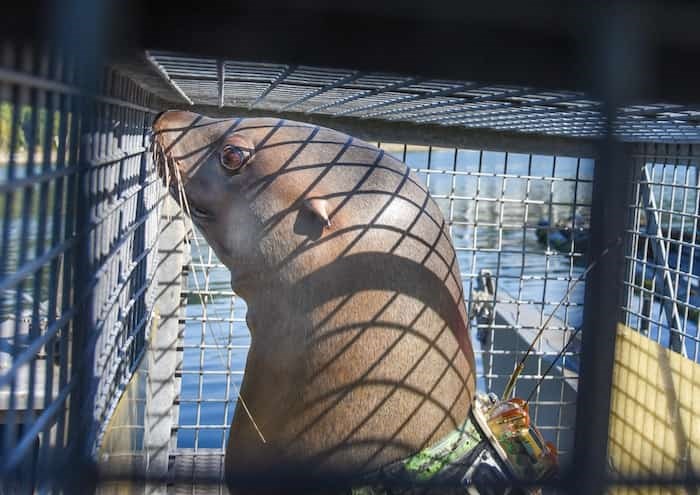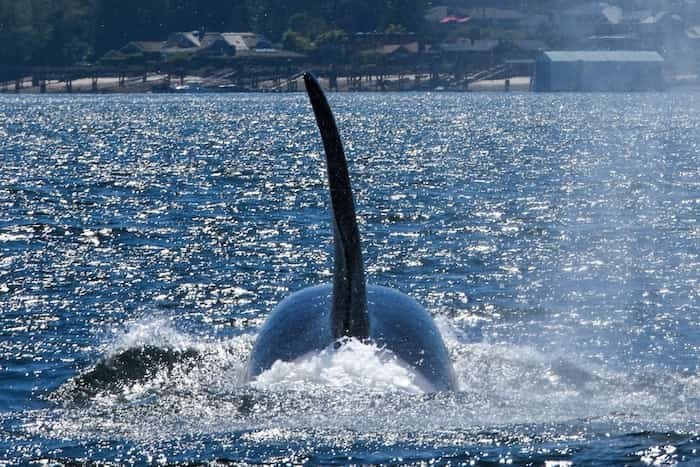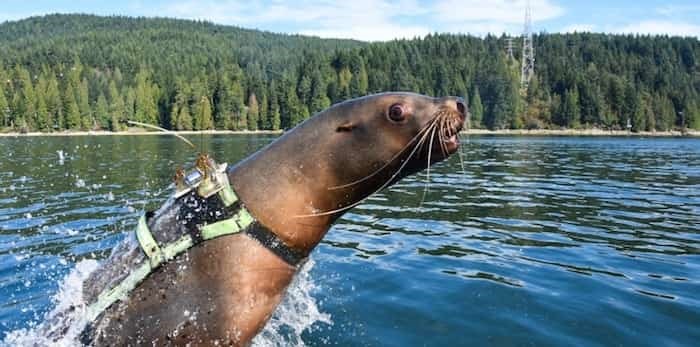A sea lion research station on the Port Moody waterfront that has struggled to secure funding will shut down before the end of the year, an event that will trigger the return of the four resident Steller sea lions to captivity at the Vancouver Aquarium.
But while the transfer of the four pinnipeds into full-blown captivity marks a turning point for the one-of-a-kind research facility, a community of supporters has sprung up in defence of the Open Water Research Station after The Tri-City News in September first reported revelations of its likely demise.
The sea lions have spent the last 16 years at the centre of the facility’s open-water research program, one that has played a pivotal role in conservation efforts as far away as Alaska. But Ocean Wise Conservation Association recently pulled its share of the funding — the Vancouver Aquarium program has long paid trainer salaries, vet bills and the cost of fish at the research station — and the facility had no choice but to close, said director Andrew Trites.
Since then, he said, streams of visitors have spontaneously showed up, all hoping to catch a glimpse of something many never knew was on their doorstep.
“I’ve lost count of how many people have come down to see the site. We’ve been here for 16 years but it’s as if people never knew it existed,” Trites told The Tri-City News.
In preparation for their move to the aquarium, the animals have already begun a mandatory quarantine process that includes blood tests to ensure they are pathogen-free and a pre-transfer stage that has them confined to their open-water pens. When they are moved to the aquarium, they will be moved as a group and kept separate from some of the other sea lions at the aquarium — at least, in the beginning.
“We’re not breaking up the family,” Trites said.
 The four Steller sea lions that form the core of the facility’s research are currently under quarantine in preparation for the return to full-blown captivity Photo: Stefan Labbe / The Tri-City News
The four Steller sea lions that form the core of the facility’s research are currently under quarantine in preparation for the return to full-blown captivity Photo: Stefan Labbe / The Tri-City NewsEven as the animals began their quarantine process, school-aged children, parents, environmentalists and several mayors have been in touch with the facility expressing interest in keeping it alive. An anonymous Port Moody donor whose children had spent time at the Bamfield Marine Science Centre on Vancouver Island put up $3,000 a month for six months to cover the facility’s lease with Reed Point Marina until June 2020. Suddenly, there was some breathing room.
Into that room stepped a group of volunteers led by local environmentalist Melissa Chaun, according to Trites, who has taken to calling them the “Friends of the Open Water Research Station.” Together, they drafted an open letter last month to key board members of Ocean Wise in an effort to reiterate the importance of the research station and establish a new relationship with a management team that recently underwent massive restructuring. Several prominent local politicians have signed on, including former NDP MP Fin Donnelly, Port Moody-Coquitlam MLA Rick Glumac and PoMo Mayor Rob Vagramov.
“There’s been such a significant changing of the guard at Ocean Wise. It’s important for them to understand what’s at stake. They’ve only been at the helm for six months,” said Chaun, who said she has been in talks with the city to create a mechanism that would funnel a small percentage of money from real estate developments into a public science fund, similar to the way arts is supported.
“We are developing our shoreline and it’s high time we see how it will affect our oceans,” she said.
 A male transient orca hunts in the waters off Port Moody, May 25, 2019. Trites says the return of orcas to the Burrard Inlet marks an important turning point in the re-wilding of the Salish Sea. Photo: Stefan Labbe / The Tri-City News
A male transient orca hunts in the waters off Port Moody, May 25, 2019. Trites says the return of orcas to the Burrard Inlet marks an important turning point in the re-wilding of the Salish Sea. Photo: Stefan Labbe / The Tri-City NewsChaun, who writes an environment column for The Tri-City News, says the group has also been speaking with professors at Douglas College and Simon Fraser University and First Nations representatives as well as teachers and school trustees from both School District 43 and the Vancouver School Board.
David Rosen, a UBC researcher also employed by the Vancouver Aquarium, is spearheading a new business plan for the station; Trites said supporters are hoping to have it, along with any new funding, in place by the end of March 2020.
“We have a foothold here and this could be the start of something more permanent: the Salish Sea Marine Science Centre,” Trites said. “It’s right here on the doorstep and people don’t seem to know that this is the wild ocean. It’s not just some backwater pond.”
Trites, station staff and volunteers envision a premiere research station akin to what’s currently in Bamfield; only here, instead of catering to research and university students, it would incorporate the region’s school boards into the mix, making it a marine education centre for all ages.
“They could take the SkyTrain out here, do a class in the afternoon, go sample water,” said Trites. “There’s just many things that can be done right here.”
Several prominent oceanographers and biologists have already done important work out of Port Moody, including local scientists such as Nora Brown, who studied ocean acidification in the local arm of Burrard Inlet, later presenting her findings at the 2016 climate conference in Paris.
“So much more can be done if there is basic infrastructure — where they can come to dock, a place to wash their samples, help filter them,” Trites said.
That potential, to study everything from invertebrates to large marine mammals, is made possible by what Trites calls the “re-wilding of the Salish Sea.”
“We’re seeing a record number of marine mammals back: the humpback whales that were extirpated from here over 100 years ago are back… We’ve got resident populations of white-sided dolphins, healthy populations of porpoise, healthy populations of seals — and sea lions,” he said.
Aside from the southern resident killer whales — which is probably not a Salish Sea problem, said Trites — everything else points to an ecosystem that has shifted to a new stable state.
“We should be studying it, taking care of it, observing it. Why not make that base right here? You’re on the doorstep, the edge of our Serengeti.”




